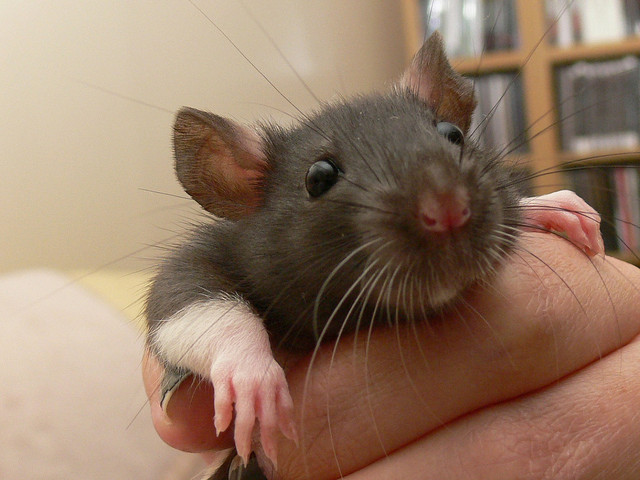Mars Rat Would Be Having A Very Bad Time, If It Existed At All

UFO enthusiasts have spotted what they think is a rat or a squirrel on Mars, allegedly as part of a NASA experiment to see how long a rodent would survive on the Martian surface. There are several things wrong with this explanation -- aside from the whole conspiracy theory thing.
Note that the “rat” is not wearing a space suit. NASA sending an unsuited rat to Mars to see how long it would live completely exposed to the elements would be akin to spending billions of dollars to toss a rat into a wood chipper to see how long it stayed conscious. Plus, a rat corpse on Mars would likely look a lot more beat up than the dead rats the average New Yorker might encounter in a subway station.
An unprotected rat on the Martian surface wouldn’t do well, to put it mildly. Mars has an atmospheric pressure that is a fraction of Earth’s, approaching the low pressure found in the vacuum of space. In those conditions, most of the rat’s bodily fluids – saliva, tears, sweat and the water in its lungs -- would boil off almost immediately, resulting in certain death -- and a much more desiccated corpse than the so-called rat in the photo.
The rat's blood would stick around for a little longer. As NASA scientist Geoffrey Landis explains on his website, the blood in a normal mammal circulatory system doesn’t boil at near-vacuum, because natural blood pressure is high enough to keep blood from boiling at the rat’s natural body temperature (slightly higher than a human’s). But once the heart stops, that protection would be gone.
Even if the evaporation of most of the rat’s body fluids didn’t kill it, it would still die pretty rapidly. Mars’s atmosphere is less than 1 percent oxygen, so the rodent explorer would suffocate pretty quickly.
Even if the near-total lack of oxygen failed to slay our Martian rat, he would still likely freeze. Temperatures on Mars swing wildly to the extremely low end of the mercury, getting as cold as -225 degrees Fahrenheit at the polar ice caps during winter.
At best, our spacefaring squirrel would stay conscious for about 10 seconds, then die within several minutes. There are a few humans that have survived exposure to vacuum, including one NASA technician who was testing a space suit in 1966 – but he lost consciousness after about 12 seconds, and was revived after the pressure in the suit was restored.
This of course, assumes that a celestial rodent wouldn’t have already died en route thanks to any number of equipment failures.
There are some creatures on Earth that could potentially survive direct contact with Mars. German scientists have found that certain lichens and cyanobacteria can survive inside environmental chambers that mimic the conditions on Mars. And the humble tardigrade, or "water bear" (which looks more like a stubby caterpillar) can survive exposure to both the vacuum of space and solar radiation; it enters a dehydrated, near-death state under such conditions, but can be revived with a little water.
Weird rock formations on Mars have frequently drawn comparisons to Earthly objects – one semi-translucent rock feature put people in mind of a “Martian flower;” another shiny protuberance drew comparisons to a robot’s arm.
The most famous formation on the Red Planet, though, is the “Face on Mars,” first photographed by Viking 1 in 1976. Later inspections showed that the “face” wasn’t an alien monument – just a Martian mesa that happened to catch the light in the right way.
Human brains seem hard-wired to see patterns in everyday objects – even if it leads us to conclude that a tea kettle looks like Hitler or that the Virgin Mary’s face has miraculously appeared on a grilled cheese sandwich. A tendency to be ever-vigilant about recognizing patterns may have served early humans well – it’s probably safer to assume that the weird dappled shadow is a man-eating leopard. But in the modern world, this phenomenon – sometimes called apophenia, or patternicity – can be the reason behind some questionable behaviors. The human desire to see the signal in the noise can lead to anything from a gambler’s mistaken belief that he knows how the roulette wheel will spin to the spread of a viral news story.
© Copyright IBTimes 2025. All rights reserved.





















